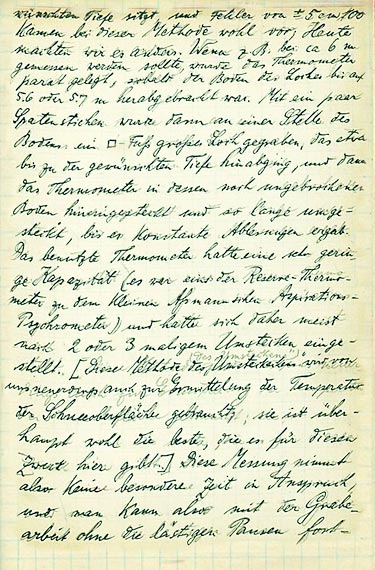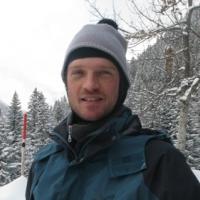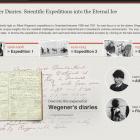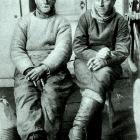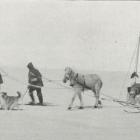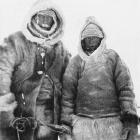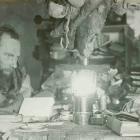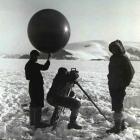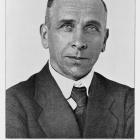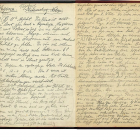NL 001-010_100
Source: Alfred Wegener, Tagebücher, June 1912 – July 1913. DMA NL 001/010.
[100] wünschten Tiefe sitzt, und Fehler von ± 5 cm / 100 kamen bei dieser Methode wohl vor; Heute machten wir es anders. Wenn z.B. bei ca 6 m gemessen werden sollte, wurde das Thermometer parat gelegt, sobald der Boden des Loches bis auf 5,6 oder 5,7 m herabgebracht war. Mit ein paar Spatenstichen wurde dann an eine Stelle des Bodens ein □ Fuß großes Loch gegraben, das etwa bis zu der gewünschten Tiefe hinabging, und dann das Thermometer in dessen noch ungebrochenen Boden hineingesteckt und so lange umgesteckt, bis es konstante Ablesungen ergab. Das benutzte Thermometer hatte eine sehr geringe Kapazität (es war eines der Reserve-Thermometer zu dem kleinen Aßmannschen Aspirations-Psychrometer) und hatte sich daher meist nach 2 oder 3 maligen Umstecken eingestellt. (Diese Methodes des „Umsteckens“ wird von uns neuerdings auch zur Ermittlung der Temperatur der Schneeoberfläche gebraucht; sie ist überhaupt wohl die beste, die es für diesen Zweck hier gibt.) Diese Messung nimmt also keine besondere Zeit in Anspruch, und man kann also mit der Grabearbeit ohne die lästigen Pausen fort-
[100] desired depth. We could expect an error of ± 5 cm / 100 using this method. Today we did it differently. If, for example, we wanted to measure at about 6 m, the thermometer would be at hand as soon as the bottom of the hole had reached 5.6 or 5.7 m. With the spade, we would dig a hole of about a □ foot in size that reached the desired depth. Then we would insert the thermometer into the unbroken bottom of the hole, and keep there until it yielded consistent readings. The thermometer we used had a very small capacity (it was one of the reserve thermometers that we kept to replace the small Aßmann’s aspiration psychrometer and only rendered results after 2 or 3 dips into the hole. (Lately, we have also started using this method of “switching” in order to measure the temperature of the snow’s surface; it is actually the best method for this purpose.) Measuring does not take very long, and one can continue the digging without the bothersome breaks.
